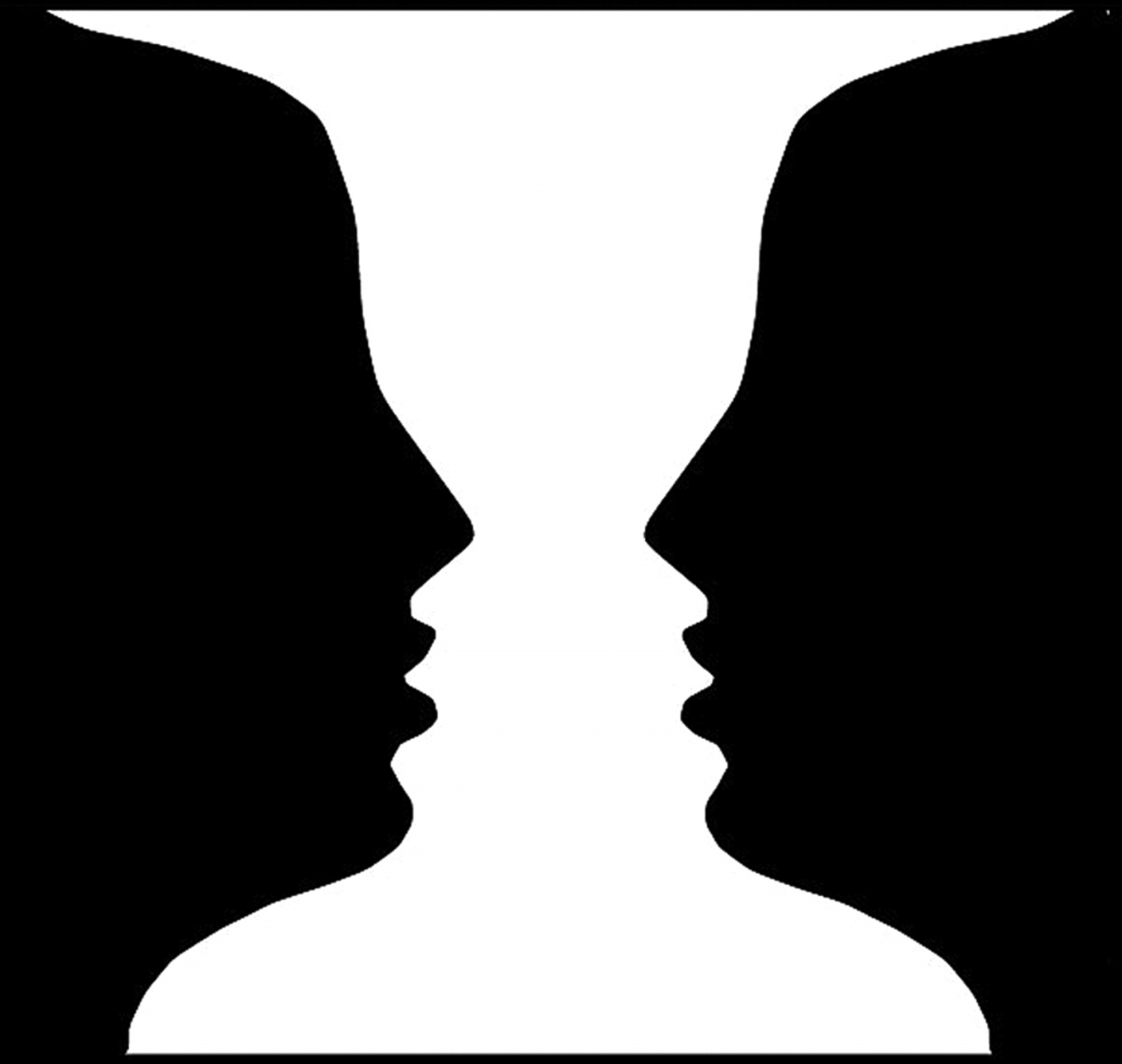In simple terms bistable perception refers to a class of perceptual phenomena in which there are somewhat unpredictable sequences of spontaneous subjective changes in visual perception of a visual object (the phenomenon has also been observed in other perceptual modalities, e.g., bistable auditory perception). The perception of such ambiguous figures depends on the properties of the physical stimulus itself and on how they are interpreted in your mind — thereby highlighting the constructive nature of perception.
Next to The Necker cube the “Rubins vase” is perhaps the most widely known example of a bistable percept. Rubin presented in his doctoral thesis in 1915 a detailed description of this visual object. The Rubins vase presents the percipient with two complementary visual interpretations (foreground versus background), but only one of the interpretations can be (stably) maintained at a given moment in time (hence the term bistability).
- Rubin, E. (1915). Synsoplevede figurer: studier i psykologisk analyse.(Visually experienced figures: Studies in psychological analysis.) Første Del. Copenhagen: Gyldendalske Boghandel, Nordisk Forlag.
The “Schröder stair” is another old bistable figure which was published by the German naturalist Prof. Schröder in 1858.
- 1) The surface of A is front, and the surface of B is back.
- 2) The surface of B is front, and the surface of A is back.
Schröder, H. (1858). Über eine optische Inversion bei Betrachtung verkehrter, durch optische, Vorrichtung entworfener physischer Bilder. Annalen der Physik und Chemie, 181(10), 298‐311.


